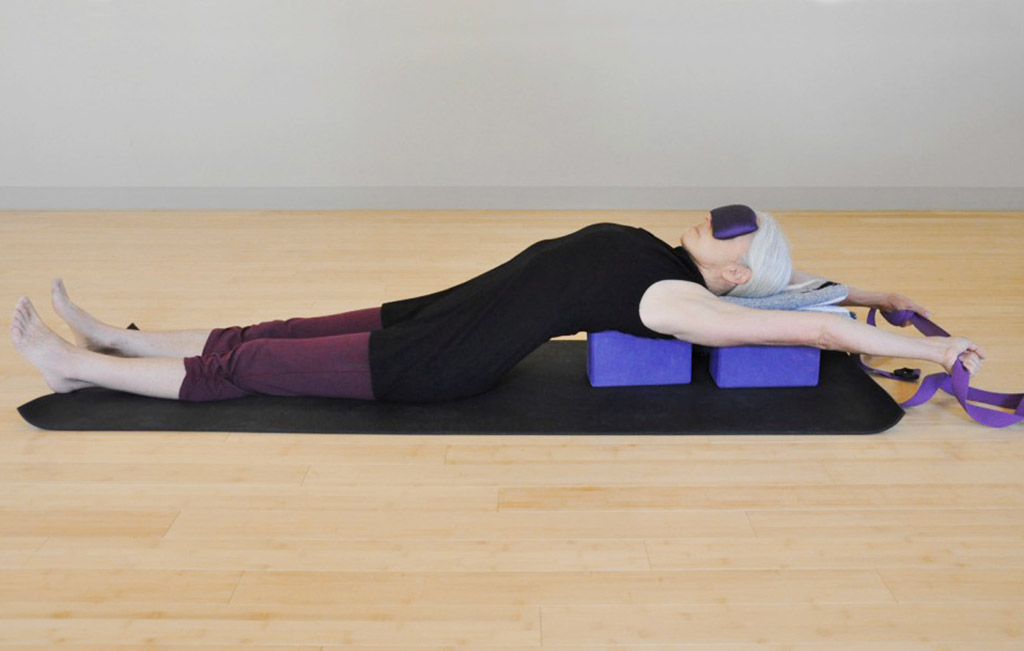
My fourth grade teacher, Miss Hazen, loved to travel. She had visited what seemed like every single state in the U.S. As she taught us about all the states and their capitals, she told us little tidbits about each state she’d gleaned from her travels. One of these little morsels struck a deep chord in me: Miss Hazen talked about a curious lake out west that was so salty you could float in it. That lake happened to be in a state whose name I found equally curious—Utah. It just didn’t sound like the states I’d been to: Indiana, Ohio, Kentucky, Michigan, Illinois.
I’ve always been a sinker. The only way I can stay on the water’s surface is to tread water furiously. So I decided that one day I would visit this lake where even I could float effortlessly. I moved to Salt Lake City in 1982, but I still haven’t tried floating in the Great Salt Lake.
So far I’ve eschewed yet another possibility to float—Matsyasana. “Matsya” is Sanskrit for fish. According to Sanskrit texts, practicing Fish Pose in water allows one to float without the help of your hands and feet. André von Lysabeth, in the book Yoga: Self-Taught, maintains that there is some justification for this claim. The radical chest-opening quality of Matsyasana moves the center of gravity toward the middle of the body—higher than its traditional seat in the pelvis—which allows improved ventilation of the lungs. This buoyant version of Matsyasana requires your legs to be in Lotus Pose, presumably so that your body is more condensed.
Matsyasana is traditionally used as a counterpose to Sarvangasana (Shoulderstand Pose) and Halasana (Plough Pose), poses that place the neck in flexion (bent forward). In the full version of Matsyasana, the neck is placed in extreme extension as you bend the neck back and place the top of the head on the floor. I rarely teach the full version of this pose. In my opinion, it is difficult for most people to do it safely. Extreme extension of the neck, coupled with pressure on the top of the cervical spine, often causes dizziness or nausea, and could, in extreme cases, cause stroke.
The supported version is another story. Nicknamed “Goody-asana” by some of my students because one student exclaims “Oh, goody!” whenever we do it—it is heavenly, and a much needed release for computer-weary necks and shoulders. Supported Matsyasana expands the chest, and if you use yoga blocks, the edges of the blocks press into neck release points.
How to Practice Supported Matsyasana
- Place two yoga blocks on their sides on the head end of your mat, one in front of the other. You may also use a Junior bolster, or two firm blankets folded in a long, narrow rectangle and stacked so that they are five to six inches high. Place your bolster or blanket stack lengthwise on your mat.
- Sit in front of your bolster, blanket stack or blocks so that your pelvis is eight to ten inches in front of them. Then lean back onto your props so that your lower ribs rest against the front edge.
- If you use blocks, you may feel the edge of the block digging into your back. If you don’t enjoy this sensation, place a blanket or folded towel over your blocks to soften the edges.
- If your head is tilting back, this pose will get uncomfortable fairly quickly. You can remedy this by placing a folded blanket under your head and neck to elevate them. A throw pillow also works well for this. Make sure that your head support is under your neck as well. This pose should be comfortable. Use as much height under your head as you need in order to feel relaxed.
- Now settle your torso down onto your props, letting your arms rest at about a 45-degree angle and turning your palms upward. Relax and breathe deeply for a minute or more.
- You can stay in this relaxed position for an even longer time, or if you’d like to try a more active variation, ground your hips and legs and actively extend your arms out overhead toward the wall behind you.
- If you have a yoga strap handy, it’s nice to use one in this variation. Hold the strap with your hands shoulders-width apart and pull out on the strap, as if you’re going to stretch it. This creates an extra opening in the outer chest. But it is fine to simply stretch your arms overhead without using a belt.
- Take care to keep your eyes, jaw and throat relaxed as you stretch your arms, and stay grounded through your hips and legs. After 5 to 10 breaths extending your arms, relax and return your arms to 45 degrees at your sides.
- Rest on your blocks or blankets, feeling completely supported, as if you are floating on the water’s surface. After a minute or so, you can repeat the arm stretch if you like.
- To come up, move your arms close in to your body and use your forearms to support you as you sit upright. Lead with your heart and let your head lift up last.
Even on dry land, settling into Supported Matsyasana can teach us how to float effortlessly. As we let go into gravity, our chest expands and our lungs become more buoyant. Perhaps someday I will float on the Great Salt Lake. For now, Matsyasana provides the lightness and expansion I love.
Updated article from July 2, 2012.
